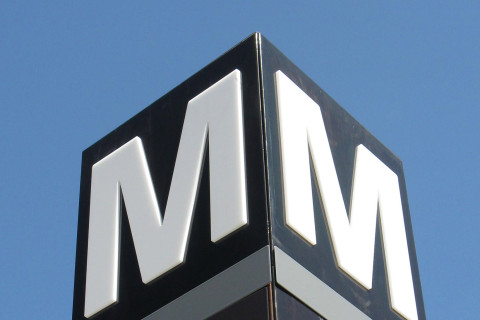WASHINGTON — Diesel canisters left on a pile of rotted rail ties, track work needs too large to handle even during round-the-clock shutdowns, and varying degrees of success in communication are among the issues identified in hundreds of Metro inspection reports released in full for the first time by the Federal Transit Administration.
The reports released Friday cover federal inspections of the system from last November through the end of August, beginning with basic fact finding and running through detailed identification of specific rail ties, fasteners and other issues that must be addressed. In some cases, the issues were corrected immediately, while in others Metro was directed to follow up.
During an inspection of 24/7 track work on the Red Line Aug. 6, FTA inspectors identified serious safety issues tied to heavy equipment and tired workers.
“Some work crew are working 12+ hours per day up to 6 days per week and are operating heavy machinery that could pose serious safety issues if operated by fatigued crew,” the report said.
The report also recommended increased checks of track work alongside Metro’s quality assurance staff. Other inspection reports found continued issues in or near areas where round-the-clock work zones were wrapping up or had been completed.
Too much work for 24/7 trackwork
In some cases, there appeared to be too much work to handle during the track shutdowns, while in others fixes were made only after the FTA pointed the issues out.
In several instances, though, federal inspectors were denied access or slowed in their work. More than once in March, inspectors were not allowed into train cabs. In August, a Metro station manager made an inspector pay with her SmarTrip card to access the Braddock Road Station. From the platform, the inspector saw significant issues with crumbling track ties and the rails on one of the two tracks that raised “strong concerns.” The station had been at the edge of a week-long complete shutdown of the Blue and Yellow Line tracks in July.
Back in March, federal inspectors had looked at the area between Braddock Road and Reagan National Airport “subsequent to an e-mail complaint from a track inspector of conditions in these areas.” They found significant issues that contributed to the stretch being included in the initial track work phases.
During 24/7 work, inspectors have noticed the frustrations of many riders. In fact, some of the inspectors have even had to give directions to riders at stations impacted by work. That prompted several recommendations to spread staff throughout the station areas and provide more bullhorns.
On Aug. 9, track problems in addition to scheduled Red Line work led to a 45-minute wait at Shady Grove, followed by a 55-minute wait and a one hour wait, with no clear pattern of service, an inspector found.
FTA: Control center needs better planning
Inspectors recommended better planning by the Rail Operations Control Center “to keep from sending to many trains in one direction without having a train going back,” the report said.
The next day, inspectors raised similar issues about too many trains going in one direction and long waits.
During that Red Line work, Metro staff told an inspector they were out of stock on insulators, and more were on order. Emergency locations with phones that connect to the Rail Control Center and buttons to cut off third rail power in an emergency were also missing doors or had other issues.
A few days later, radio communication issues emerged during inspections on the Orange Line. While inspections over the course of the year had found issues at times, and better radio practices at others, on Aug. 12 rail controllers failed to tell trains that inspectors were going out into the area. One of three trains that sped past the crew went so fast the inspector could not even catch the number of the lead car.
A follow up pre-surge inspection that came ahead of work near Vienna that weekend was again done by just one Metro department, which a federal inspector said could have been made more efficient if other groups were involved. Inspectors raised similar concerns in late August about preparations for Red Line work that will begin in late October.
Enforce speed restrictions
Track issues have been identified across much of the system, and inspectors suggest Metro do more to impose and enforce speed restrictions where needed.
In an Aug. 31 inspection near Landover, federal investigators saw six fasteners in a row that had issues in one spot, and said similar conditions extended along the tracks there.
Near Stadium-Armory, inspectors spotted drooping power lines, missing welding on the third rail, problems with bolts and other issues Jul. 8, after a complete shutdown of the area in June.
Riders can take heart that Metro is listening, to some degree, to problems spotted elsewhere in the system.
“Three grout pads and corresponding insulators were replaced on Track #1 along the platform. This was in response to a passenger complaint made via Twitter before Surge #3 [National Airport-Braddock Road] started,” an inspection report from July 11 said.
In one of the first reports in December, maintenance staff told federal inspectors that one reason there are fewer eight-car trains than scheduled and some trains do not show up at all is that railcars are consistently taken out of service due to collisions with debris and other materials left on or near the tracks.
Those issues are in addition to car shortages due to maintenance failures, and a lack of extra spare cars until earlier this year when the delivery of the new 7000 Series cars picked up.





